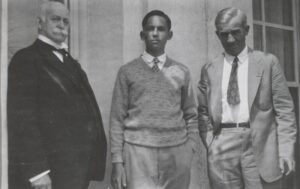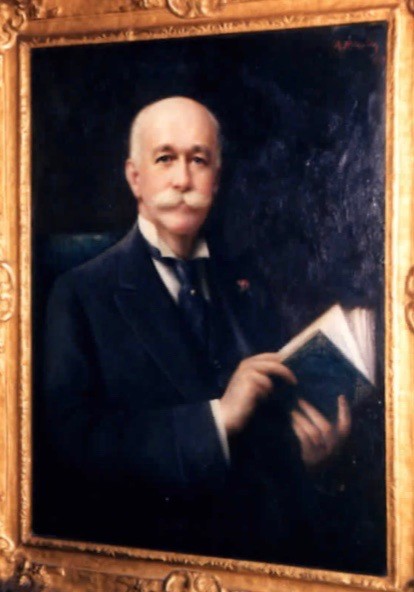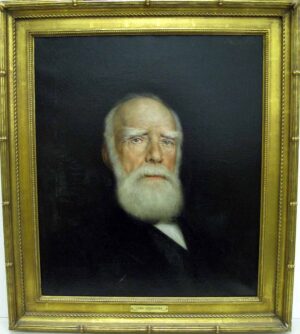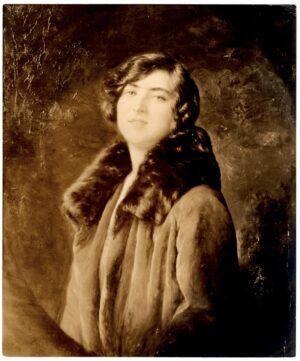
A mortally ill Henry Edwards Huntington with his grandson Edwards Metcalf and his son-in-law John Brockway Metcalf. The latter evidently valued the artist’s work and commissioned a portrait of his daughter Mary Brockway Metcalf in 1927 and bought the small seated version of his father-in-law.
Henry Edwards Huntington was born on February 27, 1850. He married Mary Alice Prentice in 1873, birth sister of his Uncle Collis Huntington’s adopted daughter, in 1910 and married Arabella Wortham Huntington (widow of his uncle Collis Huntington) on July 16, 1913 after Mary Alice’s death. He had four children with Mary Alice (Howard Edward, Clara Leonora, Elizabeth Vincent, and Marian Prentice), but none with Arabella. Arabella’s son Archer, from her prior marriage from which she was widowed, had earlier been adopted by Collis Huntington.
He was a railroad magnate and collector of art and rare books. Huntington, though born in Oneanta, New York, settled in Los Angeles where he owned the Pacific Electric Railway, as well as substantial real estate interests. Huntington provided Los Angeles with passenger friendly streetcars on 24/7 schedules, which the railroads could not match. This was facilitated by the boom in Southern California land development, where housing was built in places such as Huntington Beach, a Huntington development. Connectivity to Downtown Los Angeles made such suburbs feasible. By 1910, the Huntington trolley systems spanned approximately 1,300 miles (2,100 km) of southern California. In addition to being a businessman and art collector, Huntington was a major promoter of Los Angeles as a place to live in the late 19th and early 20th centuries. In San Marino many places are named after him. Huntington retired from business in 1916 and died in Philadelphia while undergoing surgery on May 23, 1927.
—
In a letter dated September 13, 1932 John B. Metcalf, Huntington’s son-in-law, wrote to Muller-Ury concerning this reduced version of the portrait as follows:
“As to the smaller portrait which you have we should very much like to have it though at the present time I do not feel that we can afford to buy it from you.
Should you care to hang it here we would be most glad to hold it at your disposal and also insure it in your favor. Your price I understand to us to be $2,500.00 and this we would be glad to pay when conditions allow but you understand that there is much to be done before such will be possible and in the meantime I can not obligate myself other than as mentioned. This is only a suggestion to act on as you see fit and carried no obligation in any way.”
Since the picture has descended from Metcalf in his family it must be presumed that Muller-Ury did indeed act on Metcalf’s suggestion, and that Metcalf eventually paid for the picture.



![OELRICHS, [Natalie] Lily (Later Mrs Peter Martin; Later Duchess of Mecklenburg)](https://www.muller-ury.com/wp-content/uploads/2018/11/digiScanLtd.com-Conrad69-1-300x511.jpg)

